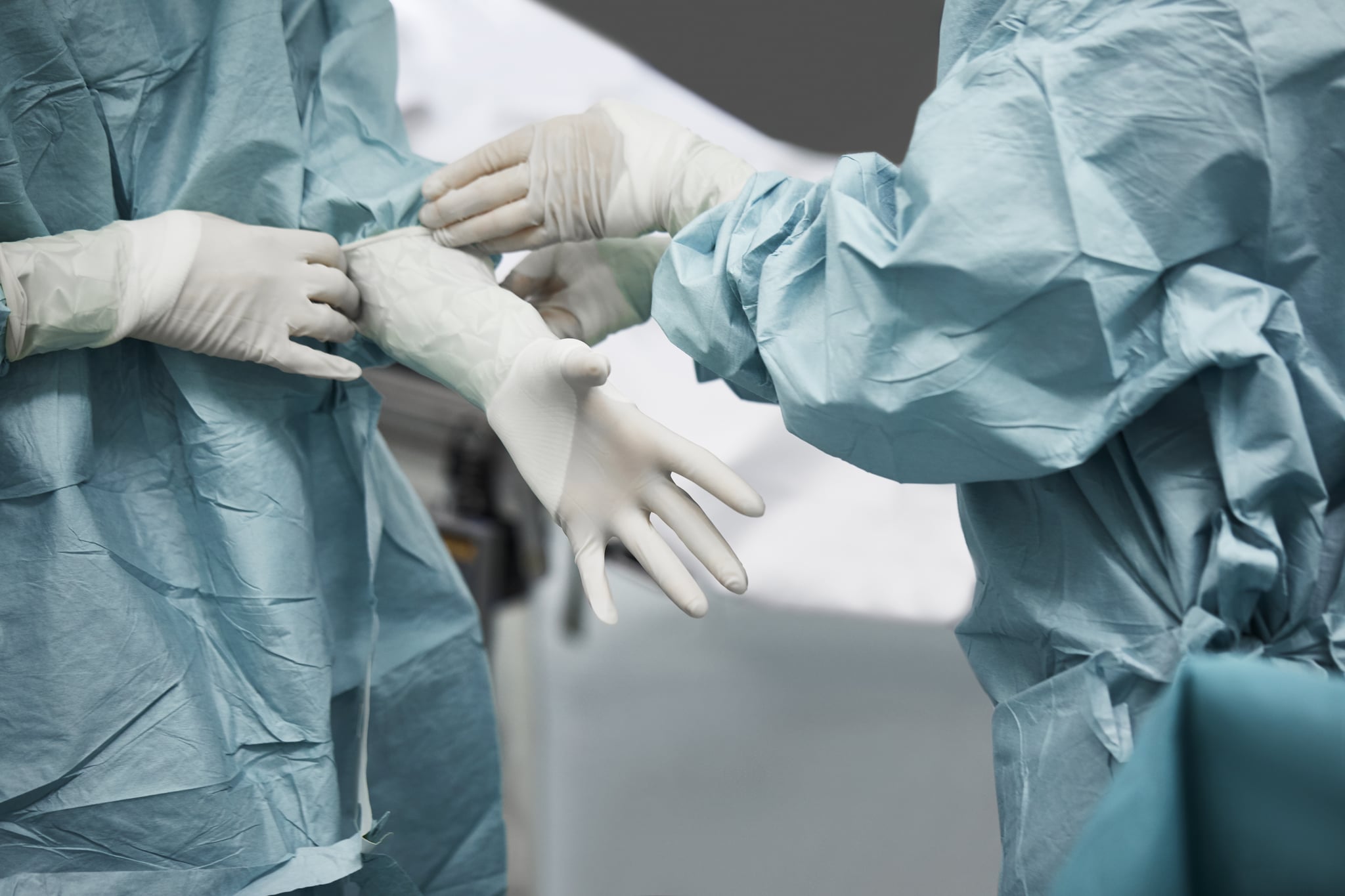
On the surface, it might seem like facelifts are back in a big way: Marc Jacobs chronicled his plastic surgery journey [1] on Instagram, Carrie Bradshaw and Anthony Marentino considered getting one [2] in the latest episode of And Just Like That, and countless people on TikTok are going to consultations for them. In reality, facelifts didn't go anywhere — people are just finally willing to talk about them.
For the longest time, facelifts have been considered taboo — far more taboo than Botox [3], filler, thread lifts [4], or any other cosmetic or plastic surgery procedure [5] that's more openly talked about today. The only time they were referenced on TV was in a mocking tone or on Botched, and they were considered to be reserved for "old people." However, in recent years, facelifts have struck a chord with an entirely new generation of patients.
According to double board-certified facial plastic surgeon P. Daniel Ward [6], MD, of Ward MD [7] in Salt Lake City, people in their 30s and 40s are interested in facelifts in higher volumes than ever before. "The proportion of patients that I see are now, on average, younger than they were 10 years ago," he said. He isn't the only one. Manhattan-based oculofacial plastic surgeon Robert Schwarcz [8], MD, has also noticed a shift, and not just in age. "The fastest-growing population are men, which previously would have a stigma of facial cosmetic procedures being aligned more with feminine qualities," he said.
"The proportion of patients that I see are now, on average, younger than they were 10 years ago."
In general, over the last few years, plastic surgery has become more widely accepted [9]. This is thanks to the wider availability of information online and celebrities who've broached the topic with openness as opposed to secrecy as many used to. Celebrities like Priyanka Chopra, Khloé Kardashian, Chrissy Teigen, and Kehlani, among others, have shared details about the tweaks they've had done [10] over the years, helping to make the topic more commonplace. But even still, facelifts didn't benefit from the same treatment — until now.
Dr. Ward largely believes education is responsible for this newfound acceptance around facelifts, in addition to the "Zoom dysmorphia [11]" phenomena. "The wide acceptance of nonsurgical treatments, such as fillers and other injectables, has made people realize the possibilities," Dr. Ward said. This has led to the slow but steady destigmatization of more "drastic" treatments. When Jacobs got a facelift in July of 2021, he proudly posted a photo of his gauze-wrapped face the day after surgery and added #LiveLoveLift in the caption. He then documented his recovery in subsequent social media posts, being fully transparent about a process that remains elusive for many.
What Goes Into a Facelift Surgery?
Facelifts primarily help with sagging skin and jowls, as well as defining the jawline and smoothing the neck. "I often include fat grafting to address volume losses or resurfacing laser to address fine lines and wrinkles," Dr. Schwarcz said. Considering your body begins to lose collagen at 30, it's not all that surprising that people may start looking into this restorative surgery earlier.
During a facelift, incisions are made so that the skin on either side of the face can be pulled back and/or removed, revealing a tighter, smoother, and more lifted appearance. "I describe it to my patients as we are positioning the tissue back where it used to be or will come [to be] for my younger patients," Dr. Ward said. "We are positioning it where we prefer it to be."
What's the Downtime For a Facelift?
The surgery has a recovery time [12] of a few weeks. The first day post-op, the drains are removed, then the full facial gauze comes off the day after that and a velcro strap is worn for the following week. After that, there's no heavy lifting or aggressive/rapid movement of the jaw for another week. "This is generally a two-week recovery, with changes occurring in the face up to a year out," Dr. Schwarcz said. The timeline is not dissimilar to many other nonsurgical procedures (although the specifics are different). "A lot of [patients] figure, 'If I'm only going to get 40 percent of the result of a facelift with one of these devices, like a laser or radio frequency microneedling, and I'm going to have the same downtime, I might as well just do the facelift.'"
"The wide acceptance of nonsurgical treatments, such as fillers and other injectables, has made people realize the possibilities."
Other Considerations to Note About Facelifts
While the attitude around facelifts has certainly shifted, that's not to say the stigma is completely gone. "The term facelift still carries a negative connotation for a lot of people," Dr. Ward said. Many aspects of the existing stigma still come from misinformation. A facelift shouldn't give you that stereotypical "wind tunnel look" that comes to mind when you think of the treatment. "With modern techniques, such as the deep plane vertical lift technique I use, the results are very natural," he said.
If you go on TikTok, you can find countless videos talking about plastic surgery. The tag "facelift" has over 628 million views on it, while "Botox" comes in at 2.1 billion, and considering it's reported 50 percent of the app's global users [13] are under the age of 34, there's a clear interest. In terms of younger patients undergoing facelifts, Dr. Ward said the risks associated with the surgery are roughly the same. "Because the aging process has not had as long to accumulate, less work is required to achieve an acceptable cosmetic result," he said. There's less lifting, stretching, and straining needed.